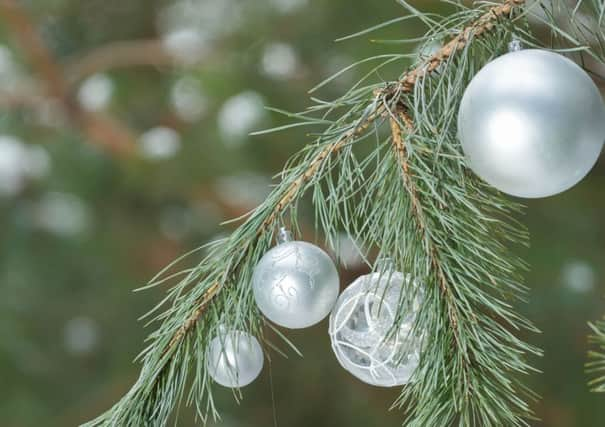Could you be allergic to your Christmas tree?


Artificial trees may be convenient, more cost-efficient - not to mention the fact that they don’t shed pine needles and require endless vacuum-cleaning or sweeping as a result - but can anything beat the magic of the real thing?
There’s the excitement and ritual of picking your tree and then driving it home, the gorgeous festive scent, and just how wonderful it looks all lit up and decorated.
Advertisement
Hide AdAdvertisement
Hide AdBut, for some of us, real Christmas trees do have a very big downside...
The traditional festive centrepiece is harbouring mould, which could be making you unwell. And the longer your tree is up, the worse you could feel.
As many as a third of Brits (35 per cent) suffer from an increase of hay fever-like symptoms at Christmas, with real Christmas trees causing most of the problems, according to a recent poll for Prevalin Allergy.
Dubbed ‘Christmas Tree Syndrome’, symptoms include itchy nose, watery eyes, wheezing, coughing, chest pains, lethargy and insomnia - and it can even lead to life-threatening pneumonia, in rare serious cases.
Scientists from Upstate Medical University, part of the State University of New York, discovered the condition after they saw an increase in respiratory problems in the weeks leading up to and shortly after December 25.
When they analysed pine needles and bark from 28 Christmas trees, they found 53 cases of mould, which releases spores that can trigger allergic reactions in people who are susceptible.
While the mould is naturally occurring, the process of bringing the tree inside creates the perfect environment for it to grow. Another study found that after two weeks of being on display, the number of airborne mould spores coming from a Christmas tree increases from 800 per 35 cubic-feet to 5,000.
Not everybody will experience symptoms, or any ill effects, when exposed to these mould spores. Like all allergies, the reaction occurs because somebody is personally susceptible, so ‘Christmas Tree Syndrome’ will only be a problem for those who experience such allergic reactions.
Advertisement
Hide AdAdvertisement
Hide AdDr. Lawrence Kurlandsky, who conducted the Upstate Medical University research, said at the time: “If you and your children don’t have any obvious allergies, then it is probably not going to bother you.”
This depends. If you are somebody who suffers from allergies, and conditions like hay fever and asthma, then an artificial tree could also potentially trigger symptoms.
“If you have stored your tree since last year, it will have accumulated a layer of dust which will be dispersed when it is disturbed,” warns allergens expert, Max Wiseberg - and as many people with allergies and asthma will know, household dust can be problematic.
Consider how your store your artificial tree when it’s not in use - packing it away in a sealed box will mean less dust accumulates. Also, give it a good clean when you get it out of storage - ideally outside or away from the living room, so that you’re not simply displacing the dust around the room.
Concerned that you or your family might be affected? Max Wiseberg suggests the following tips:
• “Hosing down your tree before taking it into the house, or after getting it out of storage, can help get rid of some of the mould and spores - though it’s probably best to get someone who isn’t allergic to do this!”
• “You should also take care when decorating the tree, or again get someone else to do it, as allergens will be disturbed as you move the tree into position and move the branches to hang the baubles and add the lights.”
• “Putting up the tree as late as possible will help minimise the risk, whilst an air purifier may also help.”
Advertisement
Hide AdAdvertisement
Hide Ad• “Try applying an allergen barrier balm, such as HayMax Pure Organic Drug-Free Allergen Barrier Balm (£5.99 for 5ml pot, Boots) around your nostrils, to help stop the allergens getting up your nose.”